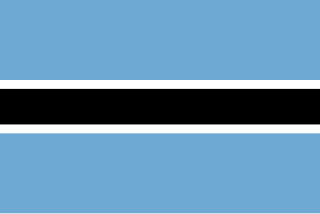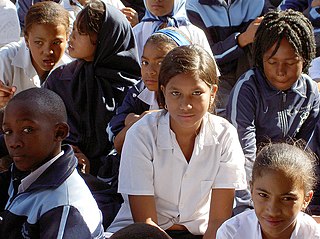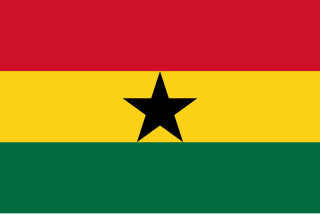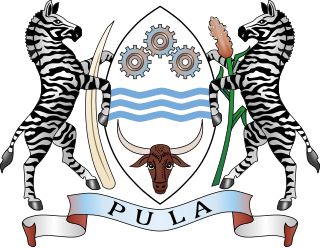Most schools in Macau are private or subsidized schools. As of the 2023–2024 school year, there were 76 schools in Macau, including eight public schools and 68 private schools. Of the 73 schools that offered formal education, six were not a part of Macau's free education network. As of 2006 many of the schools in Macau are operated by Catholic organizations.

Palapye is a growing town in Botswana, situated about halfway between Francistown and Gaborone. Over the years its position has made it a convenient stopover on one of Southern Africa's principal north–south rail and road routes.

The University of Botswana (UB) was established in 1982, as the first institution of higher education in Botswana. The university currently has three campuses: one in the capital city Gaborone, one in Francistown, and another in Maun. The University of Botswana is divided into six faculties: Business, Education, Engineering, Humanities, Health Sciences, Science and Social Sciences and the Sir Ketumile Masire Teaching Hospital. UB is ranked 1201–1500 in the world and 21st in sub-Saharan Africa in the 2024 Times Higher Education World University Ranking.

Francistown is the second-largest city in Botswana, with a population of about 103,417 and 147,122 inhabitants for its agglomeration at the 2022 census. It is located in eastern Botswana, about 400 kilometres (250 mi) north-northeast from the capital, Gaborone. Francistown is located at the confluence of the Tati and Ntshe rivers, and near the Shashe River and 90 kilometres (56 mi) from the international border with Zimbabwe.

In Botswana, the responsibilities for education fall under the Ministry of Child welfare and Basic Education and the Ministry of Higher Education; which oversees basic, secondary, and tertiary education, as well as vocational and skills training. The ministry's functions include policy formation and implementation, curriculum development, teacher training, and the administration of schools across the country.

The North-East District is one of the administrative districts of Botswana. Its capital is Francistown. In 2011, North-East had a population of 60,264 people. The district is predominantly occupied by Kalanga-speaking people, the BaKalanga. The district is administered by a district administration and district council, which are responsible for local administration.

Education in South Africa is governed by two national departments, namely the Department of Basic Education (DBE), which is responsible for primary and secondary schools, and the Department of Higher Education and Training (DHET), which is responsible for tertiary education and vocational training. Prior to 2009, both departments were represented in a single Department of Education. Among sub-Saharan African countries, South Africa has one of the highest literacy rates. According to The World Factbook - Central Intelligence Agency as of 2019, 95% of the population aged from 15 and over can read and write in South Africa were respectively literate.
Bobonong is a town in the Central District of Botswana 80 km from Selibe Phikwe town. Bobonong has a population of around 19,000. The Babirwa tribe can be found in this town. The Botswana Pink semi-precious stones can be found in Bobonong region. The Babirwa are known for harvesting the mophane worm. The locals refer to the town as Bobcity or formerly Lekgarapeng, which was derived from the stoney landscape of the town.

Tonota is a village located in the Central District of Botswana.

Education in Rwanda has undergone considerable changes throughout Rwanda's recent history, and has faced major disruptions due to periods of conflict. Education was divided by gender whereby women and men had a different education relevant to their responsibilities in day-to-day life. Women were mostly taught housekeeping while men were mainly taught how to hunt, raise animals, and fish. This is because Rwanda was a community-based society where every member had a specific contribution to the overall development of the community. Older family members like grandparents usually took on the role of educators.

Education in Ghana uses a dualistic approach encompassing both formal and informal learning systems. The current formal educational system was introduced during European colonisation. However, learning systems existed prior to that. The University of Moliyili is one of the earliest learning centers in Ghana established in the 1700s. During colonisation, European settlers initially introduced a formal education system addressed to the elites, while education of the average citizen was mainly informal, and based on apprenticeship. Economic activities in pre-colonial Ghana were based on farm produce shared within households and members of each household specialized in providing necessities such as cooking utilities, shelter, clothing, and furniture, and trade with other households was therefore practiced on a very small scale. As such there was no need for employment outside the household that would have otherwise called for disciplines, values, and skills through a formal education system. After colonization, Ghana's economy became a hybrid of subsistence and formal economy.

More than 70% of the population of Botswana is Christian. Most are members of the Anglican, United Congregational Church of Southern Africa, the Methodist Church of Southern Africa, and African independent churches. Anglicans are part of the Church of the Province of Central Africa. The Roman Catholic Church includes about 5% of the nation's population.
Louis Matshwenyego Fisher was commander of the Botswana Defence Force (BDF) from 1998 to 2006. He is a recipient of the Légion d'honneur and a Presidential Order of Honour.
Mathangwane is a village in the Central District of Botswana administered under Tutume Sub-district Council. The village is located at the confluence of the Shashe and Vukwi rivers, 25 kilometres west of the City of Francistown along the A3 highway and almost entirely on the left bank of Shashe River. The population of the village was 5,075 in the 2011 national population and housing census. The village is characterised by many river valleys, mostly tributaries to Shashe River and used for identifying the village community wards (dikgotlana) boundaries.
The Botswana Accountancy College, also known as BAC, is a business school which is headquartered in the city of Gaborone, Botswana. Initially funded and established through a joint venture between the Ministry of Finance and Development Planning and Debswana, the college caters for the accountancy and information technology tertiary needs of the country. The Botswana Accountancy College asserts itself as the center of excellence in Southern Africa and beyond. It specializes in areas of accounting, finance, business, management, hospitality, taxation, leisure, and ICT. BAC has two campuses; the main campus is in Gaborone, and the other in Francistown. The Gaborone Campus is located in the Fairgrounds Office Park of south-east Gaborone.

The Ministry of Education and Skills Development is a government ministry of Botswana. Its offices are in Gaborone. The Ministry of Tertiary Education, Research Science and Technology exists to provide and build knowledge and innovation through the development and implementation of policy on Tertiary Education, Research, Science and Technology to transform Botswana in to a knowledge based society through effective stakeholder collaboration
This article examines trends and developments in science and technology in Zimbabwe since 2009.

Victor Mbarika is an American professor from Cameroon. He is currently the Stallings International Distinguished Scholar and MIS professor at East Carolina University within the University of North Carolina System, in Greenville, North Carolina, United States. He is the President, Board of Trustees of the ICT University.
Francistown Senior Secondary School is a government institution located in Francistown, the second largest city in Botswana, with a population of about 100,079 and 150,800 inhabitants for its agglomeration at the 2011 census.












